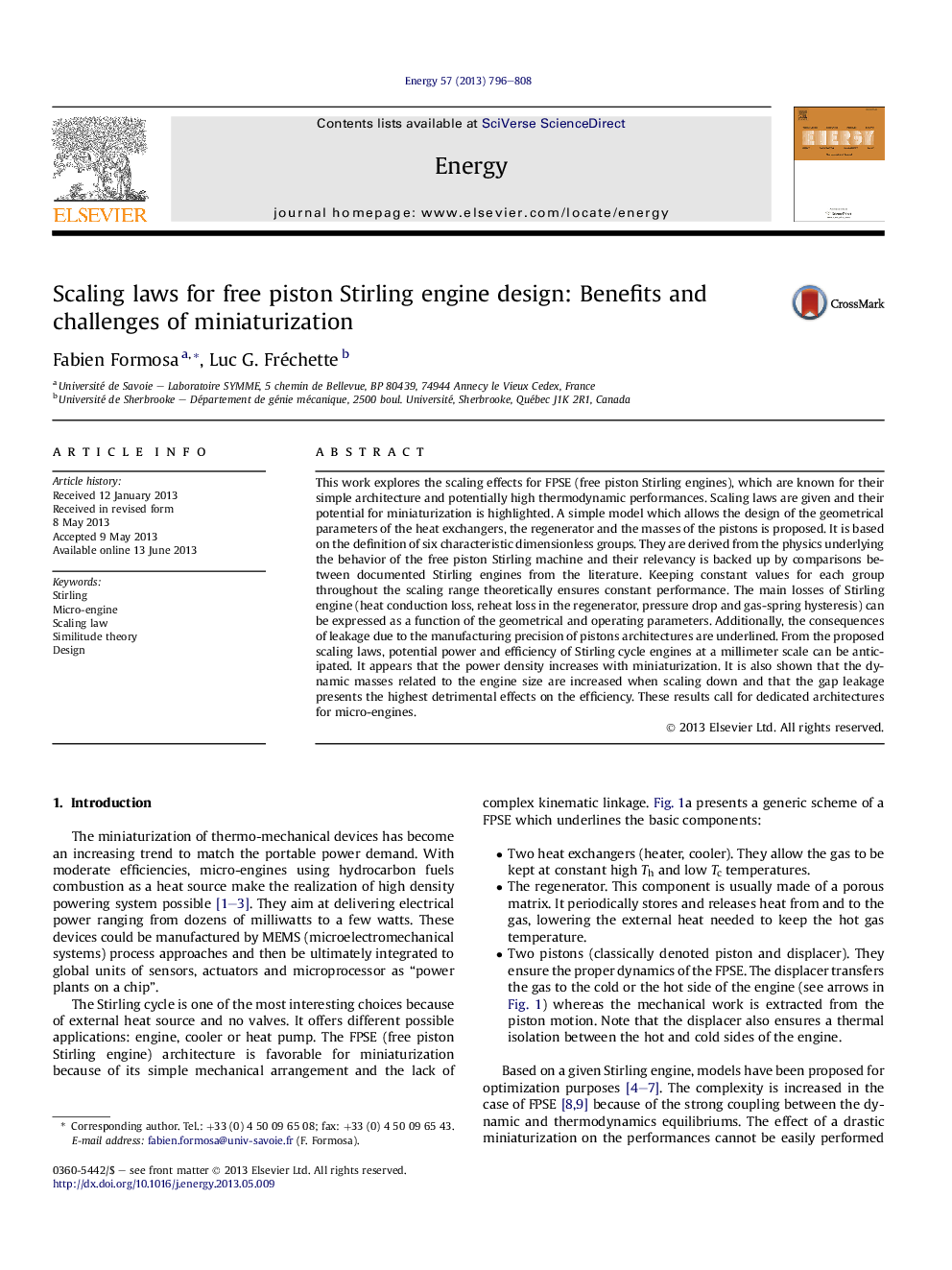| کد مقاله | کد نشریه | سال انتشار | مقاله انگلیسی | نسخه تمام متن |
|---|---|---|---|---|
| 1733123 | 1521489 | 2013 | 13 صفحه PDF | دانلود رایگان |

• Similitude strategy is applied to Stirling engines and allows preliminary design.
• New scaling laws are derived.
• The power density can be increased with miniaturization.
• The gap between the piston and casing is highly detrimental to the performances.
• High engine operating pressure is required when miniaturizing.
This work explores the scaling effects for FPSE (free piston Stirling engines), which are known for their simple architecture and potentially high thermodynamic performances. Scaling laws are given and their potential for miniaturization is highlighted. A simple model which allows the design of the geometrical parameters of the heat exchangers, the regenerator and the masses of the pistons is proposed. It is based on the definition of six characteristic dimensionless groups. They are derived from the physics underlying the behavior of the free piston Stirling machine and their relevancy is backed up by comparisons between documented Stirling engines from the literature. Keeping constant values for each group throughout the scaling range theoretically ensures constant performance. The main losses of Stirling engine (heat conduction loss, reheat loss in the regenerator, pressure drop and gas-spring hysteresis) can be expressed as a function of the geometrical and operating parameters. Additionally, the consequences of leakage due to the manufacturing precision of pistons architectures are underlined. From the proposed scaling laws, potential power and efficiency of Stirling cycle engines at a millimeter scale can be anticipated. It appears that the power density increases with miniaturization. It is also shown that the dynamic masses related to the engine size are increased when scaling down and that the gap leakage presents the highest detrimental effects on the efficiency. These results call for dedicated architectures for micro-engines.
Journal: Energy - Volume 57, 1 August 2013, Pages 796–808